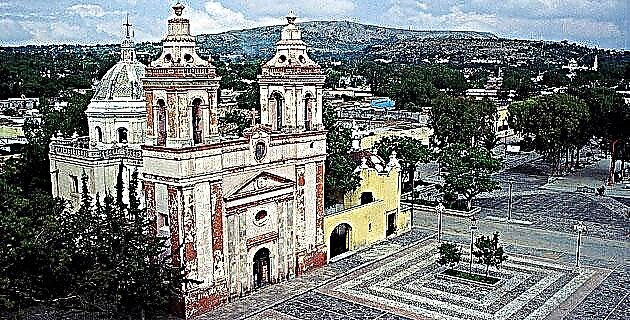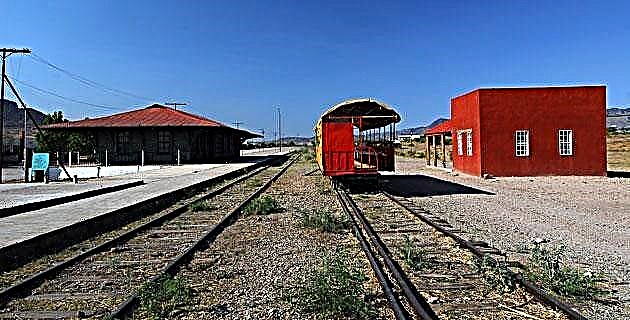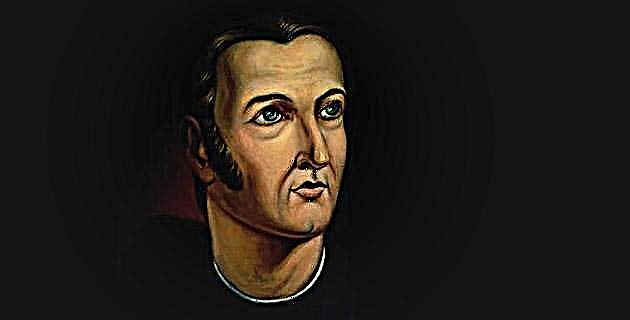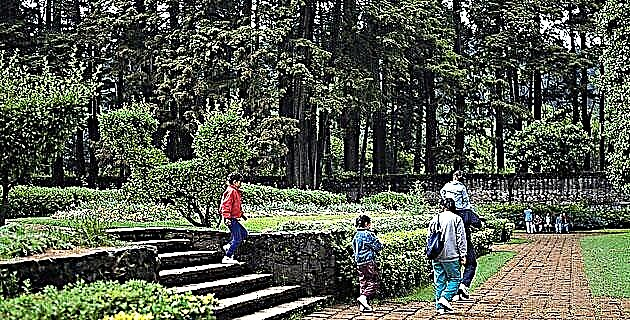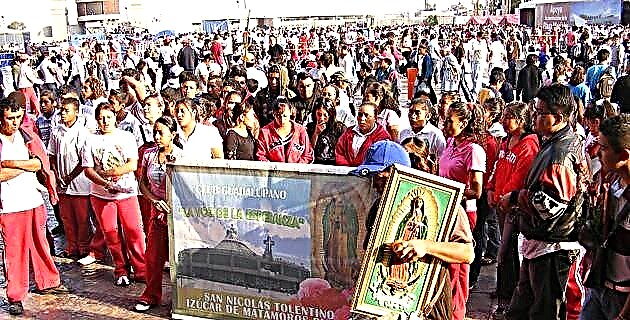
The deep feeling of devotion prompted the faithful to make long and tiring pilgrimages to the most famous shrines. We could say that what gives character to the sanctuary is the cult, and an indicator is the processions.
The pilgrimages are found both as a recurrence to pre-Hispanic ceremonial centers and in the deepest, spacious and Christian tradition. Most of the great places of Catholic worship supplanted the old sanctuaries and our saints find a great parallel with the protective or impetratory functions of the ancient deities.
Thus, the Marian temples replace those of Tonantzin, Christ and the saints Tezcatlipoca, Tláloc, etc., the whole history of our pre-Hispanic cultures cannot be interpreted without absolute immersion in its theogonic sense. All indigenous art and creation is a sublime spiritual song.
The European man ventilated his face with new climates when, in the ideal of the Crusade, he faced cultures and new realities. The Crusades were clashes, but unknowns cleared in the doubts of the peoples, they were embraces towards the new and amalgamations of commerce that outlined fresh paths to the spirit.
The roads of all Christendom towards Rome originated the pilgrimages that concentrated the believer before the chair of Peter. During the Middle Ages, in the scholastic search for the footprints of the apostles or for sacred relics, itineraries were opened to pilgrimages from the pious and altruistic Romero to the one who was contrite fulfilled with the penance of visiting covered in sackcloth and crickets, the sites marked for contrition. The Camino de Santiago Apóstol, blessed by the Virgen del Pilar, is the Appian Way of Spanish and European walking spirituality. The pilgrim sets out on the paths of charity with no other baggage than the sackcloth, the crozier and the trust in the God who does not let the birds of the field starve.
Medieval pilgrims were generators of tourism and commerce as well as determining actors in the framework of the human sciences. In 16th century Mexico, medieval zeal was mediated by Renaissance reflection and the flowery message to the gods or natural managers, was silenced at the door of the cuicallio casa del canto.
Syncretism occurred in the forms channeled inquisitorially to the redoubt of the atrium. Only with time did the sacred images achieve their thaumaturgical fame and the desperate and fident people turned their trust in miraculous intercession. The poles of divine power were made known through miracles, and the commitment of the graceful began carrying his ex-voto or proof of the favor received. The accumulation of these increased the fervor and recurrence to the sanctuary.
However, the passage of the pilgrim did not awaken in Mexico the solidarity of the transit population. As the pilgrimage does not have the serious penitential aspect in our country, despite the masochistic excesses of some, it made adventurous minds join it, when not covered up criminals who, in the care of the pious pilgrim, carried out thefts and abuses. For the rest, lacking the protective spirit of the population in transit, the new pilgrim had to finance his pilgrimage himself.
The convents, inhabited by two, three or a few friars never had in Mexico the possibility of helping pilgrims and when they were doing well, they were only offered the welcome of the ventorrillo or atrial construction to give roof to the parishioner in the patron saint festivities.
One of the richest aspects of the recurrence is in the expression of folklore through dances and the elegance of the dress in its best ethnic manifestations. Undoubtedly, the transformative talent of the missionary, more than the lack of perception, as has been said, takes advantage of the artistic impulse AND the emotional impulse of the catechumen to revitalize him. in the new cult. The adoration of the sun as the principle of creation, reverence the four cardinal points to invoke the vector star in favor of the fertility of the earth, is the beautiful rite of the dance of the flyer that is still practiced, Christianized, in infinite places.
The anachronism with every mixture of cultures is seen in the dances of the Santiagos, the Twelve Peers of France, Moors and Christians, Toreadores, Negritos, etc. In the dialogues, a page of the text can be missing as well as an alien one. Perhaps the content is not the most representative, but if the vigor and passion for the role played
Candles and candles play an important role in the fulfillment of "the mandate" and have a double origin that perhaps the routine has transformed. The light is the symbol of God —as the Gospel of Saint John says— and the flame that has been lit in our hearts burns with faith and hope before the altar of God, that is to say: “Here I am, I thank you, I love you ”, is the product of the earth that man has transformed and offers to the creator in substitution of the ancient sacrifices.
Home means place of the bonfire because in the first cultures the family gathered around it, which gave light and warmth. Underneath it the dead were buried and the perennial fire missed the love of family, its traditions and its God.
The generosity, status or size of the favor received often translates into the copiousness of the candles, preferably wax, since the paraffin does not involve the industriousness of the bee or its flowery origin. For our aboriginal peoples, the flower is the origin of the beautiful and the sublime. For the Jewish people, founder of Christianity, the offering is made with the best of the products of the land.

